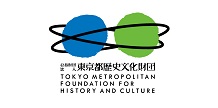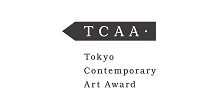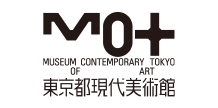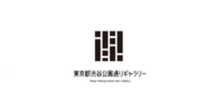Bettina Danielle Berger
- TOP >
- Archives >
- Residency Program >
- Bettina Danielle Berger
Other (Residency Program)
update: 2019.11.28
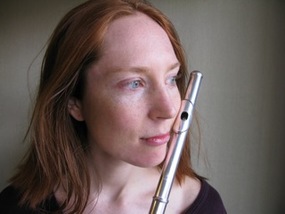
Bettina Danielle Berger
| Participating Project | International Nomination Program |
|---|---|
| Activity Based | Switzerland / Germany |
| Period | 2010.2 - 2010.4 |
Purpose of the residency
The purpose of my stay is to meet artists from Tokyo, attend concerts and performances and enjoy the city's rich and dynamic cultural landscape. My particular interests lie in Japanese forms of dance and theater.
Furthermore, I would like to exchange creative perspectives with TWS residents.
And of course I am looking forward to discovering the faces of Tokyo, its sounds, odours, colours, temperatures and flavours - and I am curious, how they will inspire my activity!
Plan during the residency
In the initial weeks, I will seek to deepen my knowledge of Japanese theatrical forms and allow them, perhaps in unexpected ways, to inspire my current and future work. This exploration may lead to a collaboration with an actor, dancer, director or choreographer from Tokyo.
Another aim will be to introduce contemporary music and improvisation to primary school children. I would like to give workshops in collaboration with a composer or performer from Tokyo in order to discuss and exchange different pedagogical concepts regarding the dissemination of contemporary music.
Achievements of the residency
Taking place soon after my arrival in Japan, the Tokyo Wonder Site's Experimental Sound, Art and Performance Festival offered me a strong introduction to my actual stay in Tokyo by giving me the opportunity to get immediately in contact with many artists with common interests and points of view. The festival--featuring a wide range of exciting concerts and performances by young, emerging talents--left a very strong impression on me, and some works in particular would influence my immediate activity. In my own lecture-recital at the festival, I discussed some of my ideas and recently realized performances, and was pleased by the level of interest shown by those in attendance. In these first weeks, I also attended great Kabuki and Noh performances, the Festival for Contemporary Koto Music, and I visited Butoh workshops, which I found highly inspiring.
During my time in Tokyo, the TWS facilitated my work with students from the
Hongodai Junior High School. I ran workshops with 14 year-olds in the school's brass band, working together with Yu Kuwabara, composer and TWS artist-in-residence. After a short warm-up phase, the children felt very open; willing to learn and to try unexpected tasks. We practiced exercises to sharpen concentration, to sensitize perception and improve their musical skills--for example, polyrhythmic structures as body percussion and on their respective wind instruments. Our main focus was to explore new sounds on the students' instruments--noises and tones that are not necessarily in their classical music background--while defining their specific timbral qualities. By combining this rich palette of new sounds with the children's brilliant creativity, we developed collaborative composition that we performed at the end of the residency.


This experience was new and inspiring for the students and became a good way to stimulate their imagination and musical energy. Because my experience to this point was only within European schools, I was interested in the serious and passionate work of the students during the class and their final performance. At the same time, I had the opportunity to meet several Japanese colleagues who work to contemporary music to schools and could discuss their educational approaches. Specifically, I found the pedagogical concepts of Rie Murakami and Tatsuya Kashishita in their Route Map Composition (ESAP Festival) very interesting.
The two "open studio" were for me another opportunity to present myself and to become familiar with the other residents' work. During the 2nd studio in March, I was able to try out an excerpt of the at that moment still incubating wellengewoben in front of an audience, and allowed a series of exciting and fruitful discussions with the public.
The 3rd iteration of the International Ensemble Modern Academy at TWS during my stay allowed me to take part in the production course, the composition seminars by Mr. Ichyanagi and Mr. Dusapin, and to attend to the many lectures and performances offered. The fact that several faculty members could attend my final presentation and give me feedback was particularly valuable to me. Shortly after, the Tokyo Goethe Institute organized 'Music and Power' Congress during which I participated in the final concert, along with members of IEMA and the Ensemble Modern.
Since several of the world's leading flute manufacturers are based in Japan I decided to visit some of their factories. I saw the process of production, tried their best instruments and was asked to try and give an expert's report on the new head-joint models and bodies of the development section.
Outcome of the exchange
One of the most wonderful sides of my residency was the opportunity to concentrate on creation while having time to assimilate the new creative ideas I was experiencing. I decided to focus on developing a work that would somehow reflect my newfound preoccupations with Japanese art and culture.
During my stay in TWS I decided to initiate a collaboration with martial artist and performer Takahiro Tomatsu. We met at the ESAP Festival, where we were immediately drawn to the deep connections between the modes of expression in our work and the relationship between conceptions of breath, voice and sound. With such a natural understanding and shared subject matter it was not long before we began to conceive a work together focused on these same ideas - breath, voice, sound - which have become the foundation for our performance in Women's Plaza Hall on March 27th in the frame of IEMA. This staged concert, wellengewoben (wave-woven), centers around a body of contemporary flute repertoire by Japanese and Western composers which explores different aspects of the voice and the breath. The concert also featured the première of Matt Rogers' My heart, and an improvised work, twine music, for flute player and rope-climber developed by myself and Takahiro Tomatsu. We aim to curate the performance of these pieces as a flowing exchange of gesture - of body, breath and voice.


I was given the opportunity during my time at TWS to discover new facets of my creativity and new possibilities of my artistic potential, experiences that make me excited for my continued activity as musician and performer. I would like to keep working with some of the artists I encountered in Tokyo in my future work in Europe, because the creative potential of some of my collaborations with them was rich and fulfilling. For instance the type of work that I initiated in matching musical improvisation to martial arts is something that I am extremely interested in continuing.
The most representative experience of the program, however, was the opportunity to work and relate to other residents' work in this ‚microcosm of beings' of TWS. The synergies of this exchange - artistic as well as 'human' - were the most precious experiences of my time in Tokyo. I began to connect and build relationships with people, places, the sounds of Tokyo. The stay at TWS seems to me so intense and overwhelming like the first act of a Noh-performance [Jyo-Ha-Kyu] : A promising opening of a longer development...
TWS gave me all the requisites for a successful working period in every respect, and was always ahead of my wishes. I felt supported and stimulated by the many suggestions and inputs by visiting and local artists that TWS organized for me.
I specially would like to thank Ms. Iemura for her consistency and dedication that have made of TWS an internationally renowned platform for emerging artists. Thanks a lot as well to the hole staff at Aoyama for their engagement and continual kindness: They allowed me to focus on my work, saved me many difficulties of an „unusual" environment and made feel welcome anytime.
TWS made also possible the contact with the Head of Cultural Affaires of the Swiss Embassy, Mr. Alexander Renggli, whom I warmly thank for his support and friendship.




